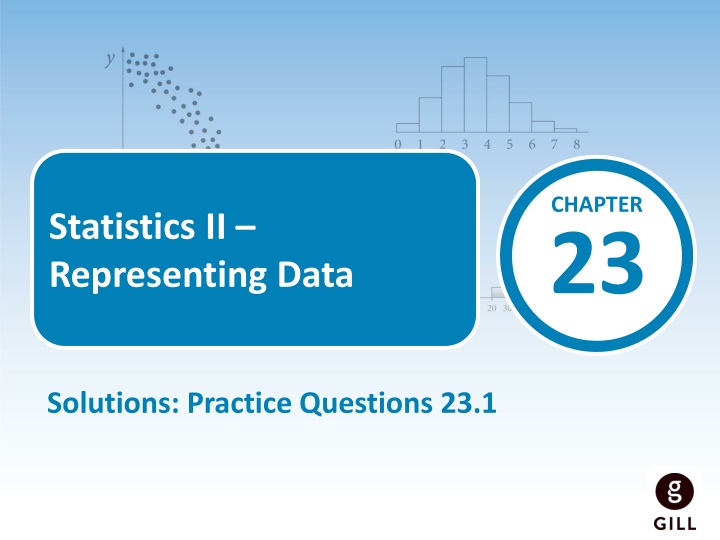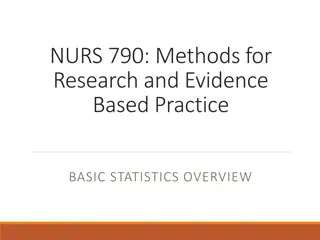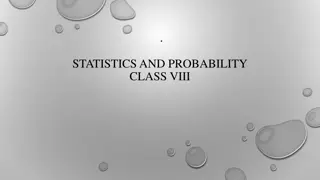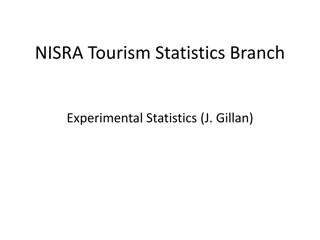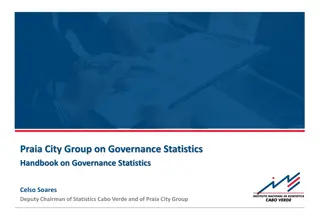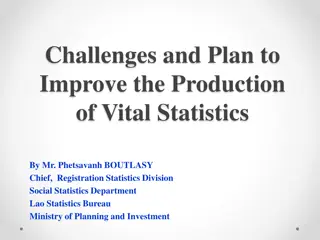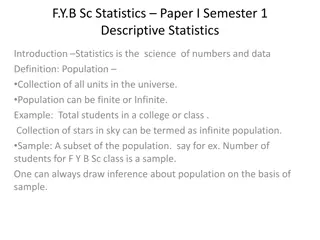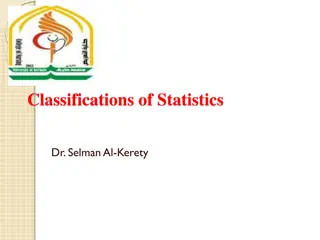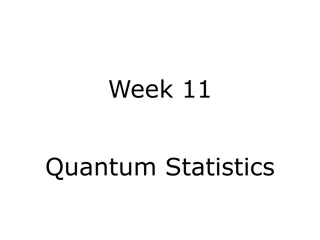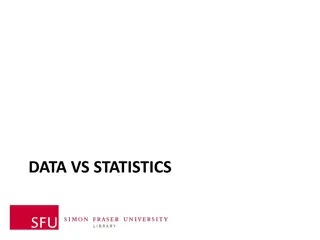Practice Questions on Representing Data in Statistics
This content consists of practice questions related to representing data in Statistics, including identifying discrete or continuous data, analyzing money spent in a supermarket, interpreting bar charts on favorite subjects of students, and calculating differences in data points. Answers to each question are provided with justifications based on the data presented.
Download Presentation

Please find below an Image/Link to download the presentation.
The content on the website is provided AS IS for your information and personal use only. It may not be sold, licensed, or shared on other websites without obtaining consent from the author.If you encounter any issues during the download, it is possible that the publisher has removed the file from their server.
You are allowed to download the files provided on this website for personal or commercial use, subject to the condition that they are used lawfully. All files are the property of their respective owners.
The content on the website is provided AS IS for your information and personal use only. It may not be sold, licensed, or shared on other websites without obtaining consent from the author.
E N D
Presentation Transcript
CHAPTER 23 Statistics II Representing Data Solutions: Practice Questions 23.1
23 Practice Questions 23.1 1. The graph below shows the amount of money spent in a supermarket in three months. Is this data discrete or continuous? Justify your answer. (i) Discrete. It is countable and can only take on certain values.
23 Practice Questions 23.1 1. The graph below shows the amount of money spent in a supermarket in three months. In what month was the least money spent? (ii) October
23 Practice Questions 23.1 1. The graph below shows the amount of money spent in a supermarket in three months. How much more money was spent in December than October? (iii) December = 32,500 October = 7,500 25,000 more was spent in December than in October
23 Practice Questions 23.1 1. The graph below shows the amount of money spent in a supermarket in three months. Karla says, In November there was a 100% increase on the money spent in October . Is she correct? Justify your answer with reference to the chart. (iv) Yes November = 15,000 October = -7,500 Increase = 7,500 % Increase = = = 100% Therefore, Karla is correct.
23 Practice Questions 23.1 2. The following bar chart shows the favourite subjects of a group of students. How many students were questioned? (i) 30 (English) 26 (French) 20 (Maths) 15 (Irish) 32 (Biology) 25 (History) = 148 total students. +
23 Practice Questions 23.1 2. The following bar chart shows the favourite subjects of a group of students. What was the difference in the number of people between the most popular and the least popular subject? (ii) Most popular = Biology: 32 Least popular = Irish: - 15 Difference = 17
23 Practice Questions 23.1 2. The following bar chart shows the favourite subjects of a group of students. How many more students picked English as their favourite than picked Irish? (iii) English: 30 Irish: -15 15 more chose English than Irish.
23 Practice Questions 23.1 2. The following bar chart shows the favourite subjects of a group of students. What two subjects combined were picked by three more students than the most popular subject? (iv) Subject A + Subject B = (Biology) 32 + 3 A + B = 35 Maths (20) + Irish (15) = 35 (Biology)
23 Practice Questions 23.1 3. The bar chart below shows the favourite social media sites of boys and girls. True or false (i) (a) Girls favourite site is Facebook. False. The girls favorite site is Instagram.
23 Practice Questions 23.1 3. The bar chart below shows the favourite social media sites of boys and girls. True or false (i) (b) More boys than girls chose WhatsApp. True. Three girls chose WhatsApp while 4 boys chose it.
23 Practice Questions 23.1 3. The bar chart below shows the favourite social media sites of boys and girls. True or false (i) (c) Instagram is the most popular site in the class. False. Instagram = 3 (boys) + 7 (girls) = 10 votes Facebook = 6 (boys) + 5 (girls) = 11 votes
23 Practice Questions 23.1 3. The bar chart below shows the favourite social media sites of boys and girls. How many girls are in the class? (ii) 3 (WhatsApp) 2 (Snapchat) 7 (Instagram) 5 (Facebook) 4 (Twitter) + = 21 girls in total.
23 Practice Questions 23.1 3. The bar chart below shows the favourite social media sites of boys and girls. How many students are in the class? (iii) Boys: 4 (WhatsApp) 4 (Snapchat) 3 (Instagram) 6 (Facebook) 3 (Twitter) + = 20 boys Girls: = 21 Total students = 20 + 21 = 41
23 Practice Questions 23.1 4. The following line plot shows the number of students that were late over a two-week period (day 1 represents the Monday of the first week, day 6 the Monday of the second week). On what day were the least students late? (i) 2nd Wednesday - Day 8: only 1 person was late
23 Practice Questions 23.1 4. The following line plot shows the number of students that were late over a two-week period (day 1 represents the Monday of the first week, day 6 the Monday of the second week). On what day were the most students late? (ii) 1st Friday - Day 5: 12 students were late
23 Practice Questions 23.1 4. The following line plot shows the number of students that were late over a two-week period (day 1 represents the Monday of the first week, day 6 the Monday of the second week). What is the difference between the number of late students on the first and second Monday? (iii) 1st Monday: 10 2nd Monday: -2 Difference: 8
23 Practice Questions 23.1 4. The following line plot shows the number of students that were late over a two-week period (day 1 represents the Monday of the first week, day 6 the Monday of the second week). What similarities are there between the two weeks? (iv) Both weeks have the highest lates on a Friday. Both weeks have the lowest lates on a Wednesday. The second half of the week has the most lates in both weeks.
23 Practice Questions 23.1 4. The following line plot shows the number of students that were late over a two-week period (day 1 represents the Monday of the first week, day 6 the Monday of the second week). In which week were there more late students? (v) Week 1 Week 1: 10 + 8 + 5 + 6 + 12 = 41 Week 2: 2 + 4 + 1 + 3 + 9 = 19 More lates in week 1
23 Practice Questions 23.1 5. Andrew recorded the number of hours sleep received by his fellow classmates the previous night and found the results listed below: 6, 5, 7, 4, 6, 8, 9, 4, 6, 7, 8, 4, 7, 7, 6, 5, 4, 8, 7, 6, 8, 7, 8, 9, 5, 7, 8, 6, 5, 6. Is this data discrete or continuous? Explain your answer. (i) Discrete. Time is continuous but data is given to the nearest hour.
23 Practice Questions 23.1 5. Andrew recorded the number of hours sleep received by his fellow classmates the previous night and found the results listed below: 6, 5, 7, 4, 6, 8, 9, 4, 6, 7, 8, 4, 7, 7, 6, 5, 4, 8, 7, 6, 8, 7, 8, 9, 5, 7, 8, 6, 5, 6. Draw a line plot to represent Andrew s results. (ii) Hours 4 5 6 7 8 9 Frequency 4 4 7 7 6 2
23 Practice Questions 23.1 5. Andrew recorded the number of hours sleep received by his fellow classmates the previous night and found the results listed below: 6, 5, 7, 4, 6, 8, 9, 4, 6, 7, 8, 4, 7, 7, 6, 5, 4, 8, 7, 6, 8, 7, 8, 9, 5, 7, 8, 6, 5, 6. What is the least number of hours sleep received? (iii) Least hours: 4 (iv) What is the greatest number of hours sleep received? Highest hours: 9 (v) What is the most common number of hours sleep received? Most common: 6 or 7 hours.
23 Practice Questions 23.1 6. A group of 120 children were asked to name their favourite flavour of ice cream. The results are shown in the table below. Flavour Chocolate Vanilla Strawberry Chocolate chip Number of Children 35 22 46 17 Show this information in a pie chart. 35 120 360 =105 22 120 360 =66 46 120 360 =138 17 120 360 =51 Chocolate Vanilla Strawberry Chocolate chip
23 Practice Questions 23.1 7. The following pie chart shows the instruments played by 30 students in a music class. How many people play piano? (i) 120 360 30=10 Piano
23 Practice Questions 23.1 7. The following pie chart shows the instruments played by 30 students in a music class. Represent the same data on a bar chart. (ii) 72 360 30=6 No instrument and also Violin 96 360 30=8 Guitar
23 Practice Questions 23.1 7. The following pie chart shows the instruments played by 30 students in a music class. What percentage of the people don t play any instrument? (iii) 6 30 100=20% None:
